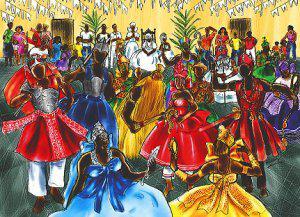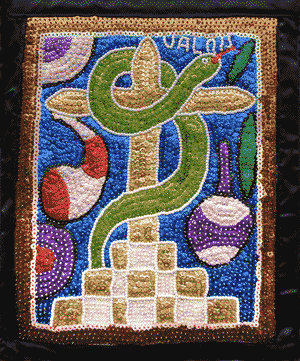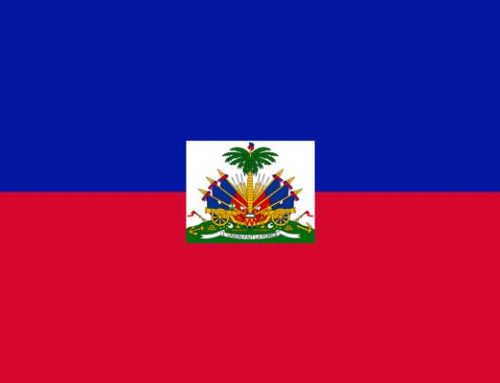African slaves were taught Christianity once they reached America, but many enslaved people continued to continue to practice their traditional religious beliefs secretly. The result was a blending of traditional West African beliefs with Christianity. Today, many Afro-American folk religions continue to be practiced in the Caribbean, particularly among the poor and less educated. They include Vodun or Voodoo in Haiti, Santeria in Cuba, Shango in Trinidad, and Kumina or Myal in Jamaica.
The Afro-American folk religions emphasize magical practices designed to bring good luck to their devotees or harm to their enemies. Ceremonies often include the ritual sacrifice of animals. The religions worship the spirits of the dead, but the spirits have been given the names of Christian saints. This blending of beliefs allowed the Africans to retain their native faith while appearing to convert to Christianity.

Santeria
This painting depicts many of the primary Orisha of Santeria. An Orisha is a spirit or deity in many Afro-American folk religions. In Santeria, the Orishas are creator’s eldest children. They are responsible for watching over humanity and each has authority over a aspect of nature.
The folk religions also provide an additional function, particularly in the remote sections of Haiti. Many practitioners of the religions can use tropical plants to relieve pain and cure illnesses. These medications are sometimes the only medical treatments available to some people.
Many people of the Caribbean profess to be Christians but feel comfortable with the rituals of the folk religions. In 1998, Pope John Paul II visited Cuba, urging Catholics to reject the practice of Santeria. In addition to the Caribbean, folk religions are also practiced in American cities with large Caribbean populations, including New Orleans, Miami, New York City, and Los Angeles.
Resources:
Download this lesson as Microsoft Word file or as an Adobe Acrobat file.

Drapo
Constructed of sequins and beads hand-sewn onto fabric, drapo depicts Haitian folklore and Voodoo practices. Voodoo is a blend of African and Christian religious practices that evolved in Haiti through generations of slavery.




